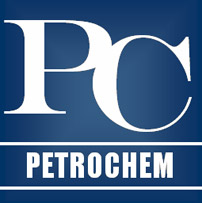Conventional Non Destructive Testing
Radiographic Testing (RT) uses the short wavelength electromagnetic radiation passing through the material to be hold for defect identification. The radiation, which reaches the film after passing through the material, forms a shadow image on photographic film (radiograph). Areas of low absorption (slag, porosity) appear as dark areas on the developed film (radiograph). Areas of high absorption (dense inclusions such as Tungsten) appear as light areas on the developed film.
To perform industrial radiography, we utilize various X-ray machines and radioactive isotopes (Ir-192, Co-60 & Se-75) and Closed Proximity Radiation System to minimize the radiation safety distance.
Petrochem is Equipped with the world’s-best and safe equipment, Certified and experienced personnel, and offer high radiography quality, high imaging sensitivity, low failure rate and high work efficiency.
Ultrasonic Testing (UT) uses high frequency sound waves (ultrasound) to measure geometric and physical properties of materials, flaw detection/evaluation. Ultrasound travels through different materials at a different speed (velocity). The speed of sound propagation in a given material is constant.
Liquid Penetrant Testing (PT) reveals surface flaws in non-porous nonabsorbent material, metallic and non-metallic surfaces by the “bleed-out” of penetrating medium against a contrasting background. This is done by applying penetrant to the pre-cleaned surface and flaw of the item being inspected. The penetrant is applied to the surface and allowed to remain on the surface for a prescribed time (dwell time); the penetrant liquid will be drawn into any surface opening by capillary action. Following the removal of excess penetrant an application of developer reverses the capillary action and draws penetrant from the flaw. The resultant indications reveal the presence of the flaw so that it can be visually inspected and evaluated.
A wide variety of penetrant materials and world class instruments are used by Petrochem. Visible Color contrast and Fluorescent type penetrant inspection system consisting of Water Washable, Post-Emulsifiable & Solvent Removable techniques are used for Liquid Penetrant Testing and provide both field and lab testing, with high volume processing of many different parts.
Magnetic particle Testing (MT) is used to locate surface and subsurface discontinuities and defects in ferromagnetic materials. Such flaws present in a magnetized part will cause a magnetic field i.e. flux, to leave the part. If the magnetic particles are applied to this surface, they will be held in place by the flux leakage to give a visual indication. Magnetic particle test will be conducted by creating a magnetic field in a part and applying the magnetic particles to the test surface.
It is fast and relatively easy to apply, and surface preparation is not as critical as compared to other NDT methods. We offer both on-site and in-house services as per client’s requirement. Black ink and fluorescent particles (Wet and Dry) are used as inspection medium.
